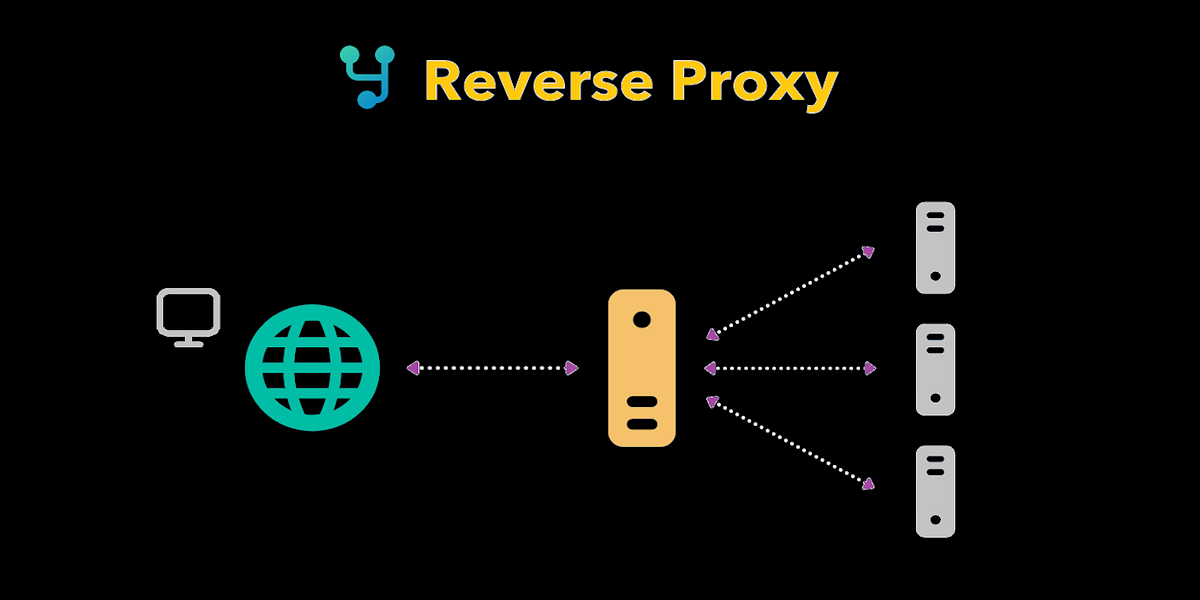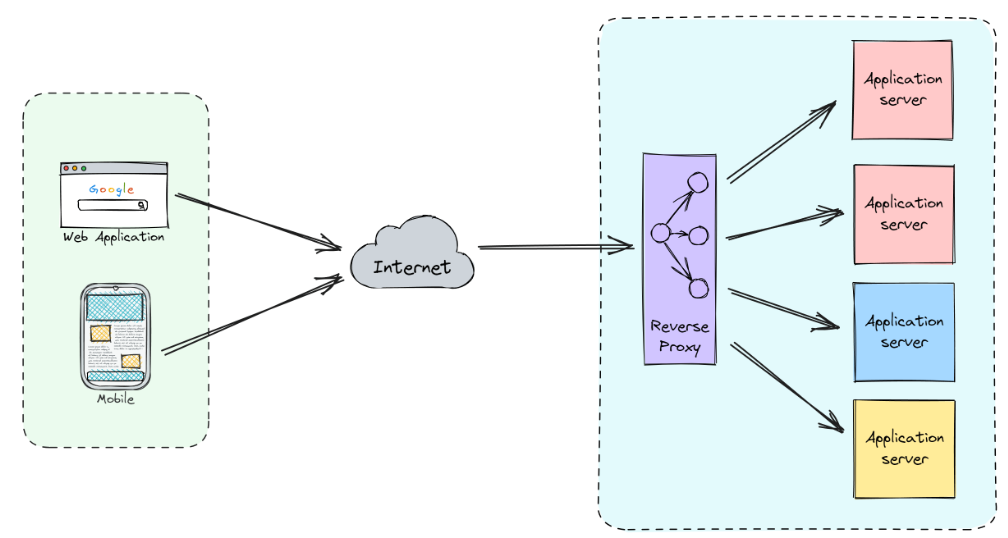
In the realm of web hosting and microservices architectures, the selection of a suitable reverse proxy server is crucial for ensuring optimal performance, scalability, and reliability. Two prominent players in this domain are Nginx and YARP (Yet Another Reverse Proxy), each offering distinct features and capabilities tailored to different use cases. In this article, we'll delve into the nuances that set Nginx and YARP apart.
What is a Reverse proxy?

Before diving into the specifics, let's establish what a reverse proxy does. Unlike a standard web proxy that sits between a client and the internet, a reverse proxy acts as an intermediary between clients and backend servers. It receives client requests, routes them to the appropriate backend server based on pre-defined rules, and delivers the server's response back to the client.
Advantages
- Load Balancing: Distributes traffic across multiple servers, improving performance and preventing overload on any single server.
- Security: Can handle SSL termination, encryption, and authentication, reducing the security burden on backend servers.
- Caching: Stores frequently accessed content, reducing server load and improving response times.
Nginx
Nginx, initially conceived as a lightweight web server, has evolved into a versatile reverse proxy, load balancer, and HTTP cache. Renowned for its high performance and efficiency, Nginx excels in serving static content, handling concurrent connections, and optimizing resource utilization.
Its declarative configuration syntax empowers administrators to define complex routing rules, manage SSL/TLS termination, and implement caching strategies with ease.
With a vast ecosystem of third-party modules, Nginx seamlessly integrates with various technologies and platforms, including traditional web servers, application servers, and container orchestration frameworks like Kubernetes.
Yarp
YARP, as its acronym suggests, is Yet Another Reverse Proxy. Developed under the umbrella of the .NET Foundation, YARP serves as a modern solution tailored for advanced routing, load balancing, and proxying requirements.
While Nginx encompasses a broad spectrum of use cases, YARP offers unique features such as a programmatic configuration model, dynamic routing policies, and seamless integration with service discovery mechanisms. These characteristics make it a compelling choice for organizations seeking fine-grained control over request processing and traffic management in their infrastructure.
Key Differences
Scope and Purpose
- Nginx caters to a wide range of use cases, from serving static files to acting as a reverse proxy and load balancer for web applications.
- YARP, while offering similar reverse proxy functionalities, distinguishes itself with its programmatic configuration model and advanced routing capabilities, providing developers with greater flexibility and control over request processing.
Configuration Model
- Nginx employs a declarative configuration syntax, allowing administrators to define server blocks and directives in configuration files.
- YARP adopts a more programmatic approach to configuration, enabling developers to write code that dynamically defines routing rules, integrates with service discovery mechanisms, and implements custom middleware.
Performance and Scalability
- Nginx is renowned for its high performance, scalability, and efficiency in handling concurrent connections and serving static content.
- YARP aims to provide comparable performance while addressing the specific challenges of routing and load balancing in modern application environments.
Ecosystem and Community Support
- Nginx boasts a mature ecosystem with extensive documentation, third-party modules, and community support, making it a popular choice for web hosting and reverse proxying.
- YARP benefits from the larger .NET ecosystem and community support.
Conclusion
So, which one should you choose? Here's a breakdown to help you decide:
Go with Nginx if:
- You need a high-performance solution for handling massive traffic loads.
- You value a mature and stable platform with extensive documentation and community support.
- You require a wide range of features through modules and configuration options.
- Your backend environment isn't limited to the .NET ecosystem.
Consider YARP if:
- You're working in a .NET environment and value tight integration with ASP.NET Core.
- You prefer a declarative configuration approach within your code or configuration files.
- Service discovery and health checks are a priority for your microservices architecture.
- You're building a new project and appreciate the ease of use offered by YARP

By carefully considering these factors, you can make an informed decision and select the reverse proxy that best aligns with your project's needs, ensuring optimal performance, security, and manageability for your web application.